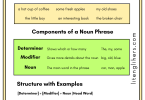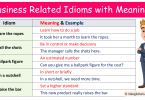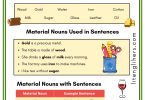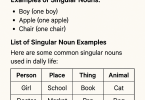In this lesson, we are going to explain what are echo questions and echo tags in English, along with their helpful examples. Let’s learn the right usage of both terms in English…
Echo Questions and Echo Tags
This lesson introduces echo questions and echo tags in English, showing how they help in conversation by expressing interest, disbelief, or seeking clarification.
Echo Questions
We can use an echo question when we do not understand what someone says to us or we find it hard to believe.
Echo questions are used when something isn’t understood or is hard to believe. For instance, if someone says, “I eat bits of wood,” a listener might respond, “You eat what?” to clarify or express disbelief.
For example:
- I often eat bits of wood. ~ What do you eat?/You eat what?
- My father knew Ronald Reagan. ~ Who did he know?/He knew who?
- Did you see the naked lady? ~ Did I see the what?
The second speaker is asking the first to repeat the important information.
These questions can usually be with or without inversion. They are spoken with a rising intonation on the question word.
- & What have they done? They’ve done & what?
Examples of Echo Questions:
Seeking Clarification
-
- Statement: I’m moving to Japan next month.
- Echo Question: You’re moving where?
Expressing Surprise
-
- Statement: My uncle climbed Mount Everest.
- Echo Question: He climbed what?
Disbelief
-
- Statement: I saw a tiger in my backyard.
- Echo Question: You saw a tiger where?
Simple Repeat
-
- Statement: I love eating pineapples on pizza.
- Echo Question: You love eating what?
NOTE
A. The question word what on its own can be an echo question or an exclamation.
- I often eat bits of wood. ~ What?/What!
B. We can use a yes/no question to check that we heard correctly.
- I often eat bits of wood. ~ You eat bits of wood?
Echo Tags
We form an echo tag like an ordinary question tag. A positive statement has a positive tag, and a negative statement has a negative tag. (But • Note c.)
Echo tags work like regular question tags but with a unique twist—they mirror the main statement with either a positive or negative tone to express curiosity or mild surprise. For example, “Max played the part brilliantly” might get the response, “Did he really?” indicating interest.
For example:
- We’re moving house soon. ~ Oh, are you?
- Max played the part brilliantly. ~ Did he really?
- The boss isn’t very well. ~ Isn’t she?
- My brothers can’t swim. ~ Can’t they?
These tags express interest in what someone has just said. Oh, are you? means ‘Oh, really?’ The voice usually rises.
- Oh, & are you? Did he & really?
But if the voice falls, this means that the speaker is not interested.
Examples of Echo Tags:
Showing Interest
-
- Statement: We’re going to Italy this summer.
- Echo Tag: Oh, are you?
Confirming Surprise
-
- Statement: My sister ran a marathon.
- Echo Tag: Did she really?
Agreement with Emphasis
-
- Statement: He’s so talented.
- Echo Tag: Yes, isn’t he?
Mild Disbelief
-
- Statement: I finished reading that long novel.
- Echo Tag: You did, did you?
Disagreement with Surprise
-
- Statement: I’m moving to the countryside.
- Echo Tag: You aren’t, are you?
NOTE
A. An echo tag is sometimes without inversion.
- We’re moving house soon. ~ You are?
B. After a positive statement, there can be a short statement + echo tag.
- We’re moving house soon. ~ You are, are you?
- Max played the part brilliantly. ~ He did, did he?
Like a simple echo tag, this also expresses interest. Although the information is new, there is a suggestion that it was expected: You are, are you? I thought so. But if the short statement contradicts the previous sentence, this expresses surprise or even disbelief.
- We’re moving house soon. ~ You aren’t, are you?
- My brothers can’t swim. ~ They can, can’t they?
C. We can use a negative tag in reply to a positive statement. This expresses agreement.
- Max played the part brilliantly. ~ Yes, didn’t he?
- It’s a lovely day. ~ It is, isn’t it?
- That was fun. ~ Yes, wasn’t it?
The information is already known; both speakers saw Max playing the part.
Differences Between Echo Questions and Echo Tags
Here’s a comprehensive explanation of the difference between echo questions and echo tags in English, along with their examples:
| Feature | Echo Questions | Echo Tags |
|---|---|---|
| Purpose | Used to seek clarification or express disbelief about something someone has said. | Used to show interest, confirm information, or express mild surprise about what someone has just said. |
| Structure | Formed with question words (like what, who), often with rising intonation. | Formed like question tags, often with the same polarity (positive-positive, negative-negative). |
| Intonation | Rising intonation on the question word (e.g., What? or Who did he know?). | Rising intonation shows interest; falling intonation shows disinterest. |
| Inversion | Can be used with or without inversion. | Usually follows standard question tag inversion, but can sometimes appear without inversion. |
| Expresses | Surprise or disbelief about specific details in the previous sentence. | Curiosity, mild surprise, agreement, or verification of the previous sentence. |
| Examples | Statement: “I met a celebrity.” Echo Question: “Who did you meet?” |
Statement: “I met a celebrity.” Echo Tag: “Oh, did you?” |
| Single Word Response | The question word alone can serve as an echo question (e.g., What?). | Often requires a short reply plus tag for clarity (e.g., You did, did you? or Yes, didn’t he?). |
| Yes/No Question Usage | Can use a yes/no echo to confirm hearing correctly (e.g., You eat bits of wood?). | Yes/no tags confirm or agree with prior statements (e.g., Max played well. – “Yes, didn’t he?”). |






